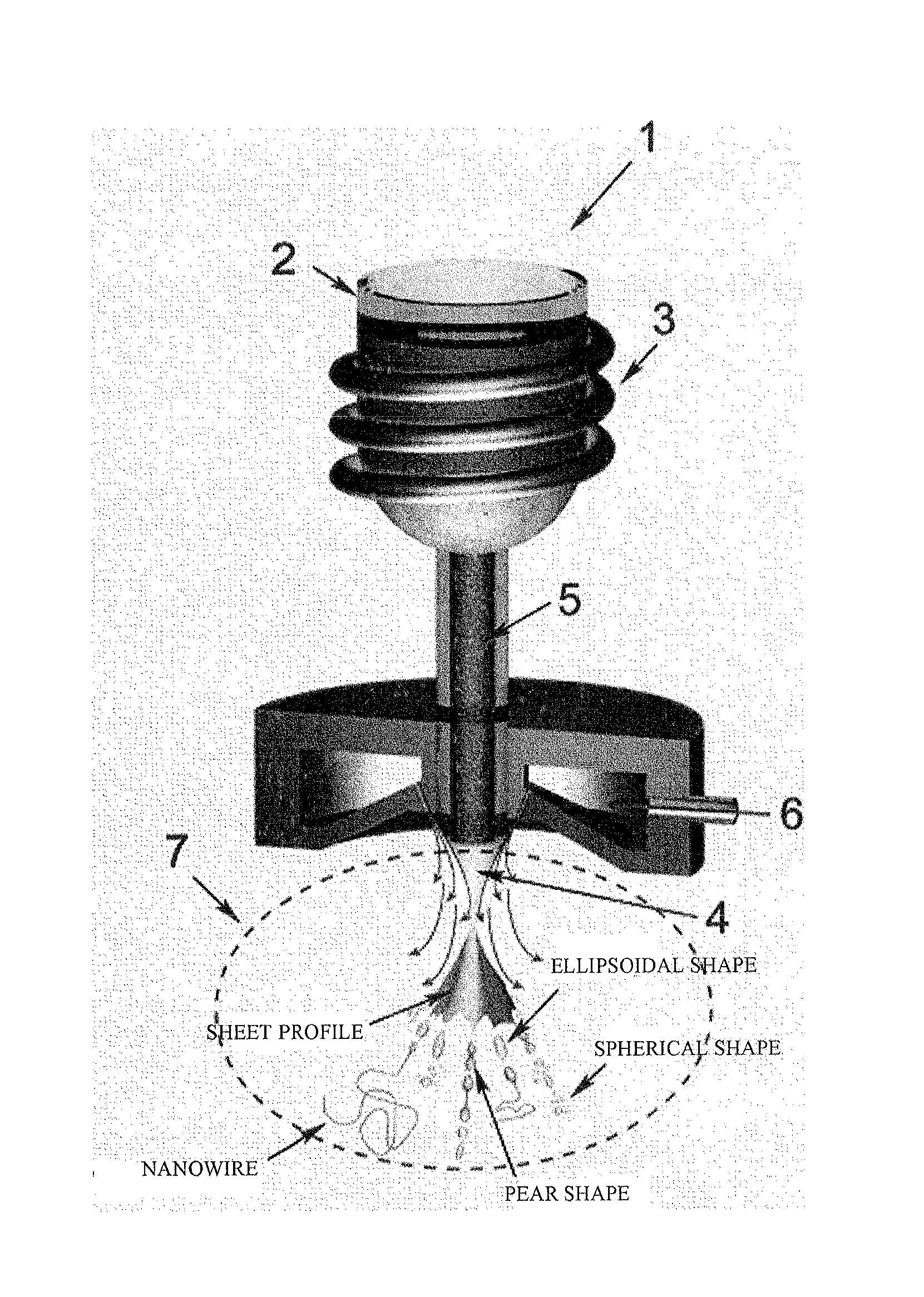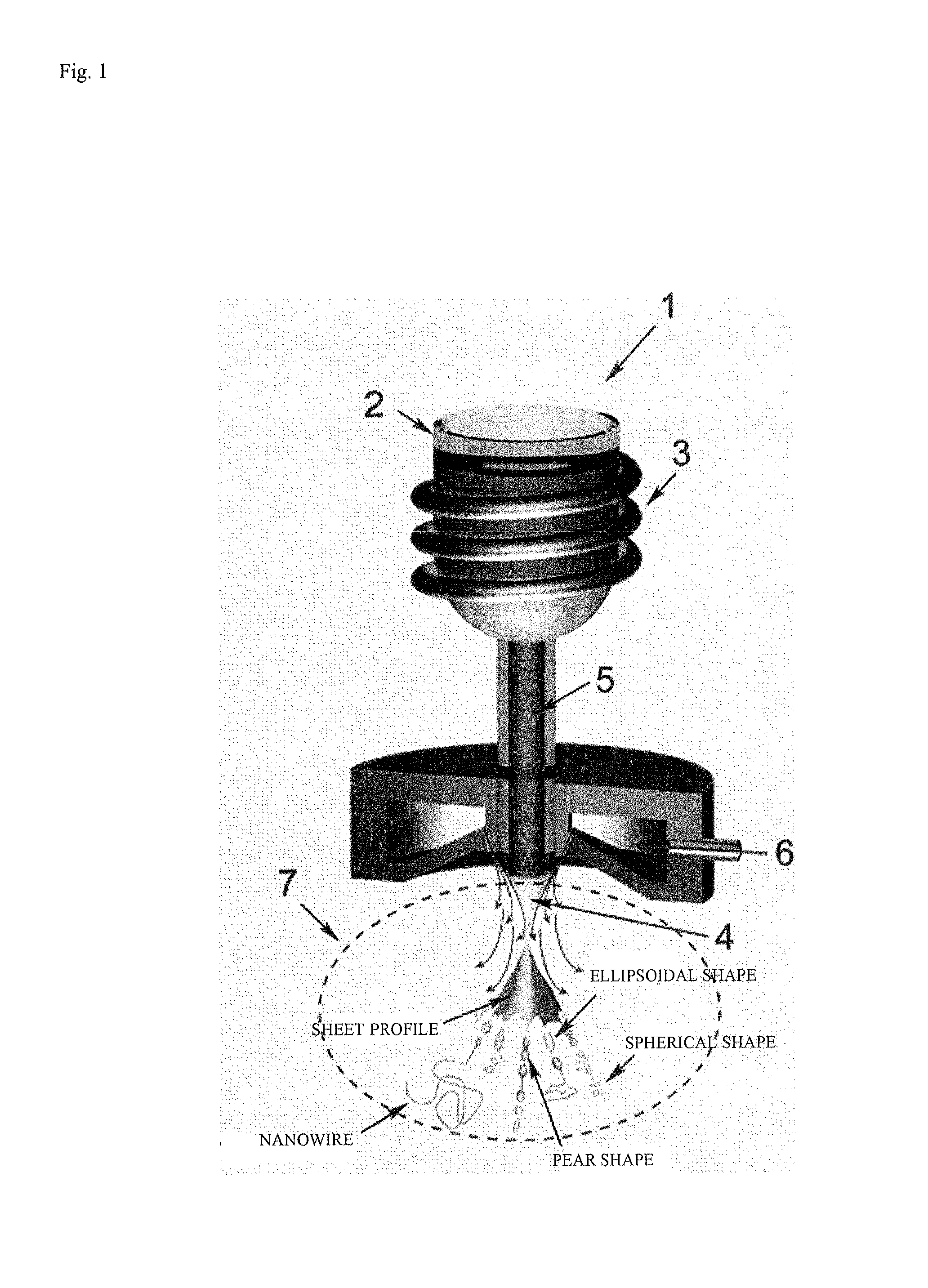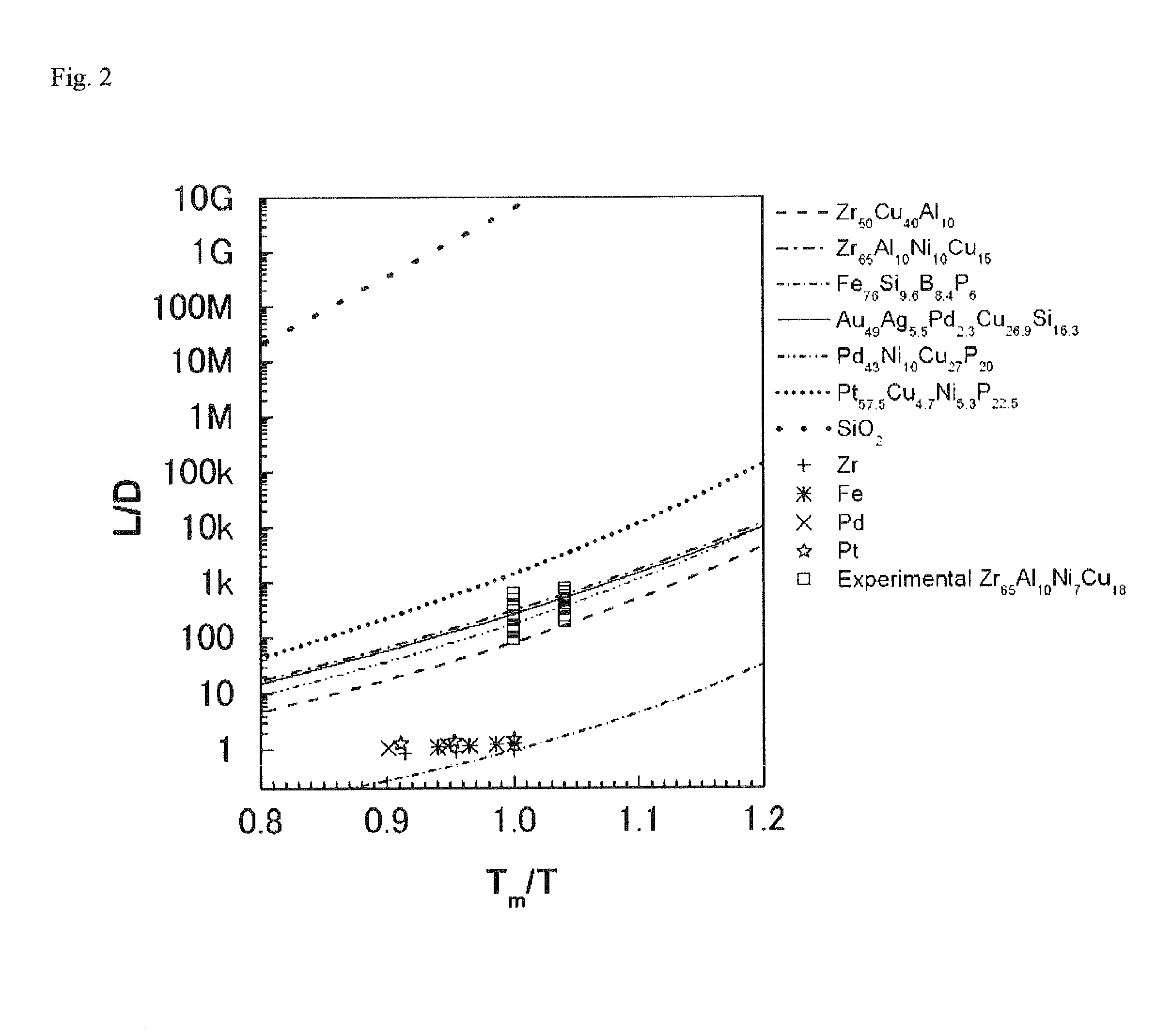Method for manufacturing metallic glass nanowire, metallic glass nanowire manufactured thereby, and catalyst containing metallic glass nanowire
a technology of metallic glass nanowires and nanowires, which is applied in the direction of metal/metal-oxide/metal-hydroxide catalysts, chemical/physical processes, metal-working apparatuses, etc., can solve the problems of difficult length extension, limited commercial examples of successful commercialization of nanotechnology, and inability to meet the requirements of high-temperature processing, etc., to achieve the effect of small diameter, simple fashion and large quantities
- Summary
- Abstract
- Description
- Claims
- Application Information
AI Technical Summary
Benefits of technology
Problems solved by technology
Method used
Image
Examples
example 1
[0099]40 g of metallic glass having the composition Fe76Si9.6B8.4P6 prepared as described above in (Preparation of Fe-based metallic glass) was placed in the crucible 2 of a gas atomization device (made by Makabe R&D Co. Ltd.: compact gas atomization device VF-RQP-100), bringing the melt to 1300 K with the induction heating coil 3. The molten flow 5 was sprayed out at 0.3 kgf / cm2 through the spray port 4 in the bottom of the crucible 2, employing high-pressure argon gas at 18 kgf / cm2 in the gas diffusion zone 7 to spray it until no more melt was left in the crucible 2. FIG. 3 is a scanning electron microscopy (SEM) photo of metallic glass nanowires obtained in Example 1. It was verified that metallic glass nanowires had formed, together with spherical particles, thin fragments of irregular shape, and metallic glass particles of ellipsoidal shape. The average number density of metallic glass nanowires which formed was 1.9 per mm2, and the particle mean diameter of the spherical metal...
example 2
[0100]Gas atomization of metallic glass was carried out in the same manner as in Example 1, except for setting the gas pressure to 42 kgf / cm2. The average number density of metallic glass nanowires which formed was 7.2 per mm2, and the particle mean diameter of the spherical metallic glass particles was 7.1 μm.
example 3
[0101]Gas atomization of metallic glass was carried out in the same manner as in Example 1, except for setting the gas pressure to 70 kgf / cm2. The average number density of metallic glass nanowires which formed was 20.5 per mm2, and the particle mean diameter of the spherical metallic glass particles was 5.1 μm.
PUM
| Property | Measurement | Unit |
|---|---|---|
| Pressure | aaaaa | aaaaa |
| Pressure | aaaaa | aaaaa |
| Metallic bond | aaaaa | aaaaa |
Abstract
Description
Claims
Application Information
 Login to View More
Login to View More - R&D
- Intellectual Property
- Life Sciences
- Materials
- Tech Scout
- Unparalleled Data Quality
- Higher Quality Content
- 60% Fewer Hallucinations
Browse by: Latest US Patents, China's latest patents, Technical Efficacy Thesaurus, Application Domain, Technology Topic, Popular Technical Reports.
© 2025 PatSnap. All rights reserved.Legal|Privacy policy|Modern Slavery Act Transparency Statement|Sitemap|About US| Contact US: help@patsnap.com



